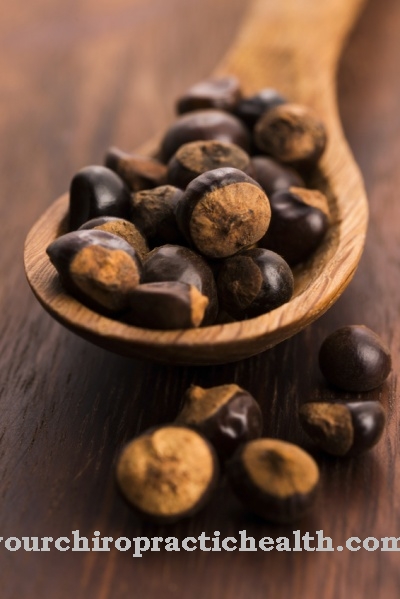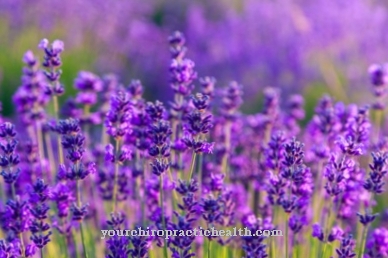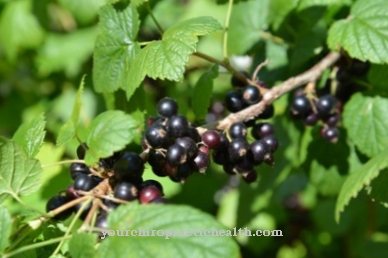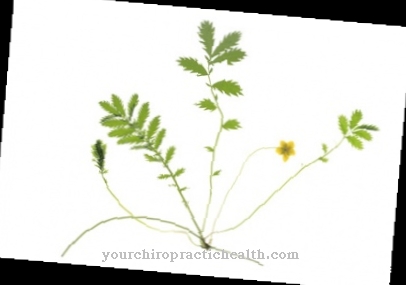In the Tormentil it is a rose plant. The plant can also be used as a medicinal herb.
Occurrence and cultivation of the tormentil

The name bloodroot is attributed to the blood-red discoloration of the plant roots when they are scratched. The rose plant reaches a height of approx. 30 centimeters. A typical feature of the plant are its bright yellow flowers. The inside of the rhizome is colored red and is dark brown on the outside. Several stalks are driven out of the tormentil. On these are the serrated leaves.
The bloom time of the tormentil takes place between June and August. The home of the plant is in northern and central Europe, but it can also be found in western Asia. The plant prefers to thrive in meadows, in light forests and in sunny places. It shouldn't be too warm for it to grow well. The bloodroot has several ingredients that can be used therapeutically.
These include primarily the tannins. 15 to 20 percent of the tannins come from the catechin type. It also contains the glycoside tormentillin as well as flavonoids and essential oils. Other ingredients include saponins, phenolic acid, gum, resin and the coloring agent Tormentol.
Effect & application
Herbal medicine uses the tannins found in the root of the bloodroot for therapeutic purposes. After collecting the plant, the root is first chopped up. Then the effective drugs are extracted with the help of alcohol. The tannins of the bloodroot have a contracting (astringent) effect. They also have the ability to change the structure of proteins. This leads to solidification or upper layers of the skin and mucous membranes.
This creates a hemostatic effect, which in turn allows wounds to be sealed. The bloodroot also makes it difficult for bacteria to penetrate the skin or mucous membrane. Nerve signals are transmitted more weakly by the skin. This fact can have a positive effect on itching. The medicinal plant also has an antibacterial, detoxifying, antispasmodic and immune stimulating effect.
The bloodroot can be administered in different ways. So it can be taken as a tea, among other things. To brew it, add a cup or two of hot, boiled water to the tormentil. Then the tea steeps for another ten minutes. After straining, the patient can have one to three teacups per day.
It is recommended to take a break from bloodroot tea after six weeks of therapy. Instead, the user drinks a different tea that has a similar effect. After this break, the bloodroot tea can be served again.
Another possible application is the administration of a tormentil tincture. You can also make this yourself. For this purpose, the bloodroot is placed in a screw-top jar. Then the user pours all parts of the plant with alcohol or double grain. After closing the jar, this mixture is left to draw for six to eight weeks. Later the mixture is strained and poured into a dark bottle. The dose for using the tincture is 10 to 50 drops per day. It is also possible to dilute the tincture with water.
The bloodroot can also be used externally. The tincture or tormentil tea can be used in the form of washes, poultices or baths.
Importance for health, treatment & prevention
The therapeutic effectiveness of tormentil was already known in the Middle Ages. At the time, the medicinal plant was even considered an effective remedy against the dreaded plague. Hildegard von Bingen (1098-1179) recommended it for the treatment of diarrhea. Even today, the bloodroot is used against acute, unspecific diarrheal diseases such as traveler's diarrhea. It is also suitable for treating the bacterial dysentery caused by the Shigella bacteria.
Other areas of application in the gastrointestinal area are intestinal cramps, bleeding in the rectum and so-called irritable bowel syndrome. Due to its high content of tannins, the plant is often used to treat inflammation of the mouth and throat, such as sore throat, oral mucosal inflammation, gingivitis or sore throat. To do this, the patient rinses his mouth with the bloodroot tea or tincture.
There are also some external complaints that can be treated with the bloodroot. These include wounds, bleeding and various skin diseases. Treatment with the plant is also useful against loss of appetite, weak immune system, fever, rheumatic diseases, gout, conjunctivitis of the eye, hemorrhoids, itching of the anus, bruises or burns.
Since the bloodroot is said to lower blood sugar levels, it can also be used to treat diabetes mellitus. Another area of application is women's diseases. For example, tormentil can be used against bleeding from the uterus or excessive menstrual bleeding. It also promotes menstruation in women. In homeopathy, the bloodroot is rarely used. There it is used to treat acute or chronic intestinal problems.
Treatment with the bloodroot is not suitable if the patient reacts to its ingestion with nausea or other stomach problems. In this case, the patient should refrain from therapy with the plant. Simultaneous use with other drugs is also not recommended.
























.jpg)



